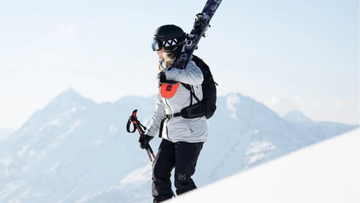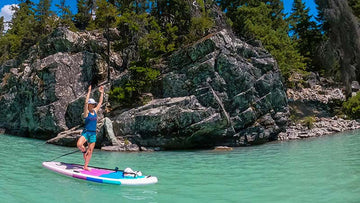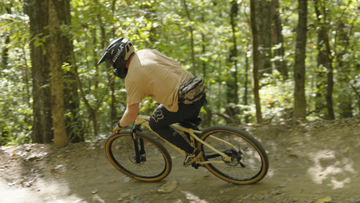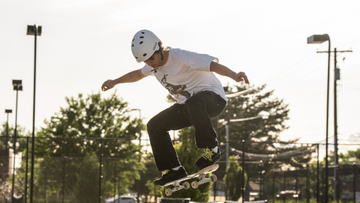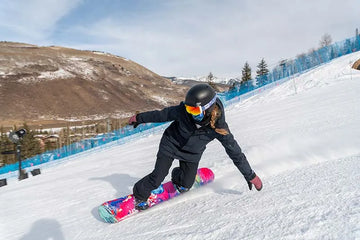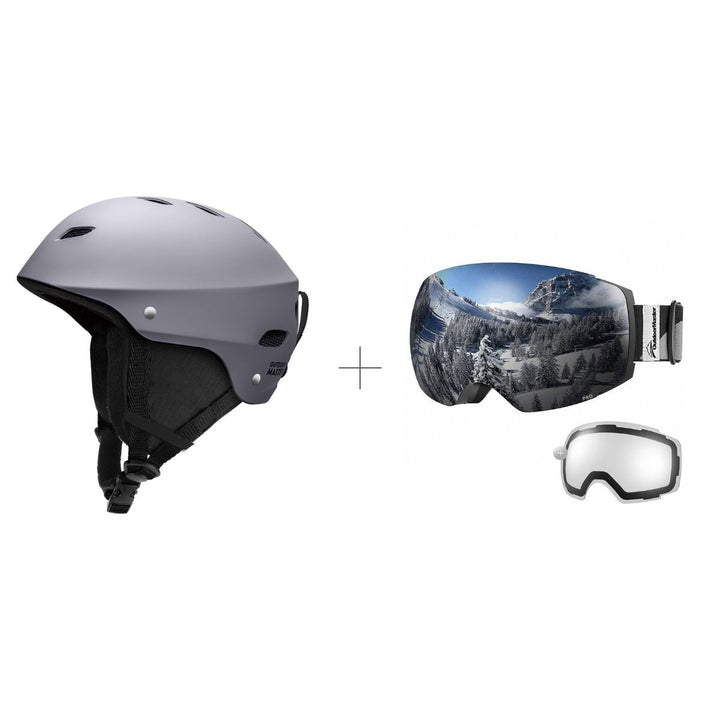
Whether it’s your first time on the slopes or you’re a seasoned veteran, it can be difficult knowing which type of snowboard is right for you. The equipment you choose can easily make or break the experience, so it’s crucial that you select a board that fits your exact needs. With over 700,000 snowboards sold each year from a variety of brands, choosing the “right” board can quickly become overwhelming.
However, there are a few key things you can look out for when shopping for a snowboard. These characteristics will help you determine exactly what you need so that you can get up on the hill shredding in no time. With that, let’s jump in.
Table of content
What to Look For in a Snowboard Snowboard Size Chart Riding Style and Terrain Ability Level Technology Where Are the Best Places to Buy a Snowboard? Finding the Best Deals: 4 Money-Saving Tips Must-Have Items to Go Along with Your Board Choose a Snowboard Catered Towards You Frequently Asked QuestionsWhat to Look For in a Snowboard
Wouldn’t it be easy if there was a quick and simple formula for picking the right board? As convenient as this would be, snowboard choice is incredibly personal. Every rider is unique and has a different style that they take to the mountain. When purchasing a new board, you want to accommodate this.
Still, there are a number of key elements that’ll help you decide the exact board for your needs:
-
Preferred Riding Style
-
Ability Level
-
Size
-
Technical Aspects
If you’re a beginner snowboarder, stick with what’s recommended. The technology will be better catered for your riding ability and you’ll have a more enjoyable experience on the mountain.
However, if you’re quite competent on the slopes, the above-listed elements are simply a starting point for you. If you have the budget and room in your quiver, feel free to experiment with some of the more unique options.
Snowboard Size Chart
When choosing the correct snowboard, the most important thing to consider is undoubtedly size and length. Boards are specifically engineered to handle a certain size of rider, and if you choose a snowboard length outside of your range you’re bound to be dissatisfied.
The old adage goes that your board should fall somewhere between your chin and nose when it’s standing in front of you. This is bad advice and is no longer applicable. Back in the day, this rule of thumb was much more relevant, but with the massive advances in board technology, your height is no longer as important. What truly matters is weight.
|
Size Chart (By Weight) |
||
|
Weight (lbs) |
Weight (kg) |
Board Size (cm) |
|
80-110 |
36-50 |
135-146 |
|
110-120 |
50-54 |
142-148 |
|
120-130 |
54-59 |
144-149 |
|
130-140 |
59-63 |
146-152 |
|
140-150 |
63-68 |
148-154 |
|
150-160 |
68-73 |
151-156 |
|
160-170 |
73-77 |
152-158 |
|
170-180 |
77-82 |
153-159 |
|
180-190 |
82-86 |
155-161 |
|
190-200 |
86-91 |
157-163 |
|
200-210 |
91-95 |
158-165 |
|
210 and up |
95 and up |
159-168 |
If you’re too heavy for the board that you’re riding, you won’t be able to fully utilize the board’s best features. You’ll likely ride much slower down the mountain, and every action you take with your body will be magnified. When you do pick up speed, the board is bound to wobble and lose control due to the extra weight strapped into it.
If you’re too light for your board, you won’t have the adequate control you need for proper riding. A snowboard that’s too big will require much more force to turn and you’ll struggle to learn new skills like jumping, popping, and buttering. Without control, you’ll also risk speeding out of control when you are unable to safely slow it down.
Most board manufacturers release a size chart for their product line that provides the suggested weight range for each snowboard length. However, if you can’t find that specific information, this general size chart should help.
Riding Style and Terrain
Once you’ve determined which size range you fall in, you’ll want to take a close look at the terrain you intend to ride on. Snowboarding is a diverse activity and there are a number of ways to enjoy the hobby. Each resort has a completely different landscape and terrain, so you’ll want to make sure you are equipped with the right tools for the job.
Resort riding is the most common, but even this can vary widely depending on geographical location. Additionally, some ski resorts have a significant number of terrain parks, whereas some have none. Furthermore, some riders choose to forgo the resort all together and venture deep into the backcountry.
The board you purchase should reflect the conditions you ride the most. If you enjoy a variety of terrain types, consider multiple boards for different occasions. In general, snowboard distributors break their board types down into four main categories:
-
All-Mountain
-
Park/Freestyle
-
Freeride/Powder
-
Splitboards
All-Mountain Snowboards
All-mountain is your go-to board that’ll serve its purpose in every type of terrain. Jack of all trades but master of none, you won’t receive a board that’s specifically designed to excel at a single type of riding with these boards. You will, however, be purchasing a solid piece of equipment that’ll be able to handle whatever you throw at it.
For most riders that only have room in their quiver for one board, all-mountain is the way to go. You’ll be able to rip up fresh resort groomers, dive in deep on powder days, and even shred up the park once the sun comes out.
If you only get to the mountain a handful of times a year, an all-mountain board is highly recommended for its versatility. The powerhouse Burton makes a range of all-mountain boards that are designed for varying ability levels.
Park/Freestyle
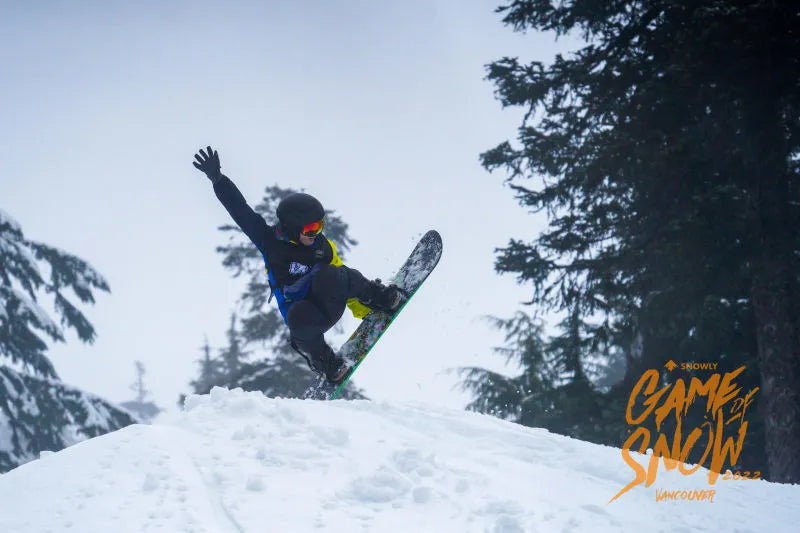
If you’re a park rat through and through, you’re going to want a board that’s specially engineered to handle the demands of the terrain park. Park and freestyle riding requires a different set of skills than generic carving and having a board designed for the job can help immensely.
Boardsliding rails, stomping jumps, and pressing your nose and tail can take a number on your equipment, so you’ll want something that’s built with durability in mind.
Freestyle board brands like Salomon and Capita feature a different set of technical aspects from all-mountain or freeriding boards. We’ll cover these in more detail a little later, but in general, a park board is featured by:
-
Twin-Shape
-
Shorter Board Length
-
Soft Flex (or firm depending on preference)
Freeride/Powder Boards
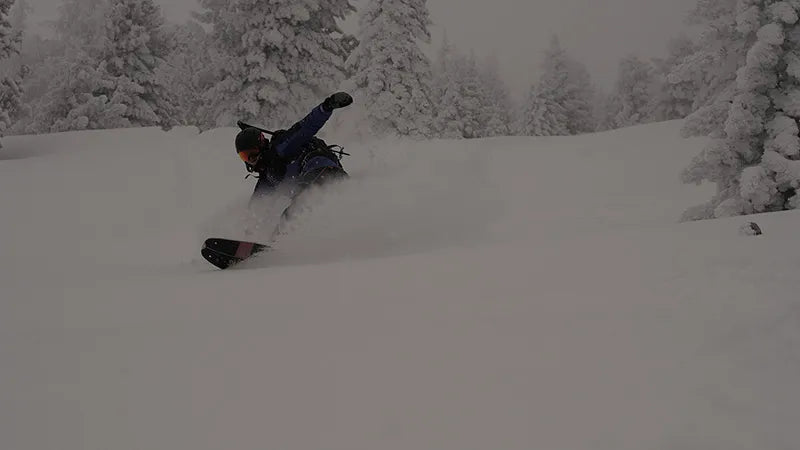
Designed for bombing steep lines, handling extreme conditions, and making the most of even the deepest powder days, a freeride board has one thing in mind - shredding. If you like to hike off-piste to the peak of the resort and drop in untouched lines, this board is for you. Similarly, if you live in an area that’s blessed by frequent snow storms, a powder board will serve you well.
Freeride boards are naturally longer to allow for faster riding and more edge control. They require a bit more strength to maneuver, but their sturdiness is what makes them excel. Jones and LibTech are both exceptional brands that prioritize big mountain riding.
If you’re looking for a powder-oriented snowboard, you may want one that has a setback binding stance. This creates more flotation, allowing you to keep your nose out of the deep snow. Occasionally, a powder board will be designed to be ridden shorter than you normally would. This is usually the case with ultra-wide boards.
Splitboards
Splitboards are the most specific type on this list, and they’re really only intended for one use - backcountry touring.
It can be difficult hiking a peak with your board on your back or in your hands, so a splitboard allows you to utilize the maneuverability and flexibility of traditional skis. Once you get to your drop-in zone, simply snap the skis back together and you’re ready to make your line.
If you’re planning on going backcountry riding, always be sure you’re well-informed on current snowpack conditions and have been properly trained in an Avalanche safety course.
Ability Level
You’ve figured out the appropriate board length for your body, and you know what style of terrain you’ll be riding most. Now it’s time to narrow the board choices down to your ability level. Not all products are created equal, and some specifically target advanced riders.
Much like size, choosing a board that reflects the level you ride at will greatly enhance your experience on the mountain. Let’s break down the details of what makes a great beginner, intermediate, and advanced snowboard:
|
Snowboard Ability Levels Compared |
|
|
Beginner |
● Designed to be ridden shorter ● Features rocker profile to prevent edge-catching ● Soft, maneuverable flex for playfulness ● Budget-Friendly ($200-350) |
|
Intermediate |
● Follows size chart recommendations ● Less intense camber profile, may feature a little rocker ● Mix of forgiving and advanced tech for growth ● Middle of the road pricing ($350-500) |
|
Advanced |
● Camber dominant profile for edge-hold, pop, and responsiveness ● Stiff flex for maximum speed ● Built with durable materials for extreme conditions ● Expensive ($500+) |
Technology
Snowboards are designed in a myriad of ways that contribute to how they feel on the snow. Board technology is a factor in this. Every brand utilizes its own proprietary techniques for ensuring top-of-the-line performance. It’s these techniques that can make or break a good board.
Snowboarding technology is for the die-hards of the sport, and where you can truly split hairs between different boards. If you’ve picked out a few possible board choices with the above information and are still unsure about which to buy, take a look at some of the fine details that’ll influence your riding.
Selecting a Camber Profile
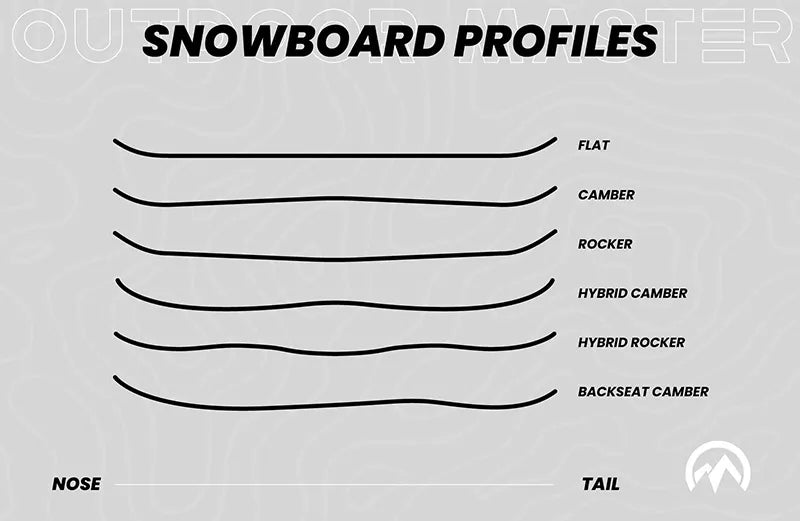
The camber profile is how your snowboard shape looks from the side. There are a few different variations used, but in general, you’ve got two choices: rocker, or camber.
A rocker camber looks like a “U” or a boat when viewed from the side. This profile minimizes edge-catching, allows for more flex, and contributes to more playful energy to the board. The downside is that it has less contact with the snow, leading to less edge control.
A camber-dominant board looks more like an upside-down “U’, especially between the bindings. This causes a slight air gap to be between the surface of the snow and the bottom of the board base. Camber dominant profiles can dig into the snow more, and also allow you to “load up” the board like a spring for a jump.
Many brands utilize a combination of the two, often electing for camber between the feet and rocker for the nose and tail. Salomon’s Rock-Out Camber is a perfect example of this.
Snowboard Shape
Now that we’re into the nitty-gritty of snowboard tech, it’s time to discuss shape. The shape of your board is largely an individual choice, and many of the unique styles are purely for aesthetic purposes.
However, there are some specific benefits to the different shapes available, and it’s something you’ll want to keep in mind for your purchase. Some of the more popular options include:

Twin: These are symmetrical tip to tail. As discussed earlier, this is common with park and freestyle-oriented riding. Their balanced nature makes them great for riding switch, which is a crucial skill for any budding freestyler.
Directional: This type of board is designed to be ridden one way. The nose and tail are often mismatched lengths, making it difficult to ride switch. Tapered tails are snowboards that have a shortened tail, letting you sit your weight back a little while riding.
Fish: While these boards fall under the category of directional, they have a much more extreme shape. With a wide nose and short, swallow tail, they resemble a fish in nature and are best intended for deep, deep powder.
Choosing Your Flex
If you’re particular about the mechanics of your snowboard, flex is an important consideration. Board manufacturers rank their boards on a stiffness scale, normally 1-10. Here’s a helpful chart for reference:
|
Snowboard Flex Chart |
||
|
1—-----------2—-----------3—-----------4—-----------5—-----------6—-----------7—-----------8—-----------9—-----------10 |
||
|
Soft ● Forgiving, harder to catch an edge ● Great for jibbing, rails, and the park ● Easy to butter |
Mid-Flex ● Balance of both soft and firm features ● Great for all-mountain riding ● Good for hitting both rails and jumps |
Firm ● Fast, stable, aggressive riding ● Provides optimum pop for half-pipe riding and jumps ● Very difficult to press |
Snowboard Bindings and Compatibility
One of the final things you’ll have to think about when purchasing a snowboard is whether or not it’ll fit with your bindings and boots. If you have large feet, you’ll need to determine if you need a wide snowboard or not. Most standard widths allow for shoe sizes up to 11 or 12. Any larger and you risk toe drag on the snow.
Your snowboard bindings style can also impact your board choice. Older models may have a different bolt pattern that’ll interfere with their attachment to the board. Some board brands like Burton also utilize their own “sliding” EST bindings, which require two bolts instead of the typical four.
Where Are the Best Places to Buy a Snowboard?

Back in the day, someone wanting to get into the sport would have to travel to a board shop where they’d be limited by the inventory that the specific store had. This could be especially difficult if they didn’t have a shop close to them.
With the advent of the internet, boarders have access to nearly every single model produced in a given year, providing them the ultimate purchasing freedom. Still, buying in person at a board shop has its own advantages. Let’s look at the pros and cons of both.
Buying at a Ski Shop
When you choose to buy a snowboard from a brick-and-mortar store, you’re putting yourself into the heart of ski and snowboard culture (learn how to sound like you know what you’re talking about here). You’ll be joining the community while also supporting a small, local business whose livelihood depends on this type of support.
The biggest advantage of shopping in person is that you’ll be able to physically feel the board you want to buy, as well as see it with your own two eyes.
You’ll be able to check out all the minute details of the graphics, as well as test the flex and feel of the snowboard. If you’re picky about the things you buy, you may want to go this route so that you know exactly what you’re getting.
Purchasing Online
Buying a snowboard online may not be the best way for everyone, but in today’s digital age it’s where most purchases in the industry occur.
Buying online has a variety of benefits that really set it apart from in-store purchasing. The biggest one is selection. With most of the big distributors, you’ll have an endless choice of boards from the current season. Even if one website doesn’t have what you’re looking for, you can always find another. When in doubt, you can even go to the specific board brand’s website and buy directly from them.
The other significant advantage is cost. There is a huge markup in price when buying a snowboard at a retail shop. Buying online allows you to score the lowest price and take advantage of large discounts.
Most distributors offer a discount code for first-time buyers, which can drastically offset your cost.
Finding the Best Deals: 4 Money-Saving Tips
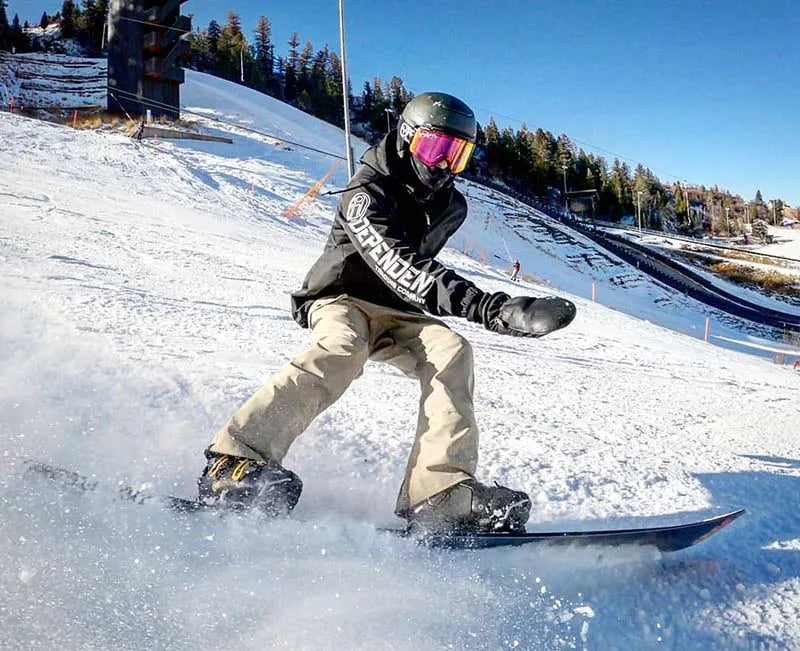
With season passes and lift tickets being as expensive as they are, no one wants to spend more than they have to on new equipment. Boards are an expensive purchase and most people are after the best deal they can get. There are a few things you can do to get the most bang for your buck.
1.Buy Your Gear in the Off-Season
The worst time to buy a board is at the beginning of the season (snowboard seasons depend on which hemisphere you’re in!) Prices are always at their highest at this point, and many retailers have limited stock because everyone else is buying a board as well.
2.Purchase Last Year’s Models
Boards from the current season are always priced at their maximum. By buying an “older” board from the previous year, you’ll likely receive a huge discount - sometimes as much as 50%. In many cases, brands produce the same model of board each year just with different graphics, so you can still get the same tech.
3.Price Check Multiple Sites
It can be easy to stick with just one website and buy whatever they’ve got listed. However, different sites can charge very different prices, so it’s always worth cross-referencing to ensure that you’re getting the best deal.
4.Buy Used from Craigslist or Facebook Marketplace
Finally, don’t limit yourself to brand-new snowboards. You can score some amazing deals by purchasing used from another person. While you won’t get the opportunity to unwrap the plastic from a brand-new product, you’ll leave hundreds of dollars in your budget for other accessories.
Must-Have Items to Go Along with Your Board
Even after you’ve purchased your snowboard, you’re hardly ready to hit the slopes. There’s some essential gear that you’re going to need to make the most of the experience, progress quickly, and stay safe. Some snowboard starter pack must-haves include:
Helmet: Snowboarding is an inherently dangerous sport, and it's easy to underestimate how quickly you’re actually going. It’s easy to top speeds of over 40 miles per hour. Colliding with another person, or worse a tree, could be deadly at this velocity. Always be sure to buy a MIPS helmet (multi-directional impact protection system) for maximum safety.
Goggles: When you’re up on the slopes you can be thousands of feet closer to the sun than you normally would be. You need adequate eye protection that’ll promote optimum visibility. Look for anti-fog goggles with removable lenses suited for a variety of snow conditions.
Comfortable Boots: If you’re rocking boots that hurt your feet, you’re guaranteed to shorten your time up on the hill. Don’t cut corners with your boot purchase and always buy new as used boots contour to someone else’s foot once they pack out.
Choose a Snowboard Catered Towards You
It doesn’t matter if you’re new to the winter sports world or you’ve been an adrenaline-charged powder hound for years, buying a new snowboard is always an exciting experience. For many riders though, the process can be confusing, and you certainly don’t want to pick the wrong product.
As long as you stick to the sizing chart and pick a snowboard style that aligns with your riding preference, you’re guaranteed to have a fun time out on the slopes with a new board. Start browsing some snowboard collections, and begin dreaming about the endless snow you’ve got ahead of you.
Frequently Asked Questions
How much does a snowboard cost?
The cost of a new snowboard can vary widely. Beginner boards from the current season start around $300, and more advanced boards can be $600 or more.
How to measure a snowboard?
You can measure a snowboard by extending a tape measure from tip to tail. Snowboard sizing is measured in centimeters.
How long should my snowboard be?
Your snowboard length should be primarily dependent on your weight, following a sizing chart. For a quick, but outdated rule of thumb, aim for the board to fall somewhere between your chin and nose when it’s stood up.
Is snowboarding harder than skiing?
This entirely depends on the person, but as the old saying goes, “skiing is easier to learn but harder to master.”

